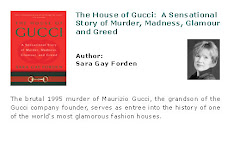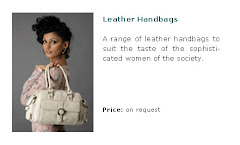One thing we may not consciously realize is that affordable trendy clothing (sometimes called "fast fashion") is a double-edged sword. Some of the staunch fashion folks may roll their eyeballs in disbelief and ask why? Well, here goes the answer- Fast Fashion makes fashionable looks accessible to those of us on real-life budgets, but when the market is totally saturated with it, the trend loses its appeal. It basically helps to kill the trend quicker.
So how do you know how long a trend will last? There may not be any sacrosanct rules, but from what one has observed in the fashion industry, here are some points to keep you in good stead.
For more advice on fashion trends and networking with people who matter in the fashion industry, I recommend that you join Fashion Networks(www.fashion-networks.com) . Keep plugged on to the blog, till the next article.
Kartik Kannan, Fashion Evangelist at Fashion Networks
So how do you know how long a trend will last? There may not be any sacrosanct rules, but from what one has observed in the fashion industry, here are some points to keep you in good stead.
- Generally speaking, most fashion trends stick around for 8-12 months. Some trends, usually the most understandable ones, last longer. For example, the personalization or initial craze started with Sarah Jessica Parker's "Carrie" necklace during season two of "Sex and the City" in 1998. The look saturated the mass market in the fall 2003 with initial handbags, sweaters -- you name it -- a full five years after it started. So as long as you have a clear differentiator in your times, you can dictate the trend, but otherwise saturation would hasten the natural killing of the trend.
- A well googled school of thought says that fashion cycles about every twenty years. Thus, the micro minis of the '80s have come back into favor now (as did the nameplate necklace mentioned above, which was hot then, too). So if you are betting on a trend, keep an eye on history to bail you out of trouble, whenever you are short of ideas.
- A huge part of deciding on how long a trend is viable depends on where in the fashion cycle you bought the trend. If you bought it as a knock-off or at a discount store, then you should count on it being in for just one or two seasons. Because the fashion industry often lumps together Spring and Summer, Fall and Winter, that gives you approximately six months of wear out of a look before it starts giving you an outdated look.
- Even though there is no hard-and-fast rule about how long a fashion trend will stick around, you can bet that the more-difficult-to-pull-off looks (Uggs, large cuff jeans, trucker hats) are just fads that will fade. Does that mean, you shouldn’t be buying them? No, don’t get too serious, as it doesn't mean you shouldn't have fun buying them, just know that they aren't looks that will be fresh next year, around this time. So get wiser and buy large cuffs jeans in that time of the year when the people love flaunting it.
- Apar from all the reasons listed there, have faith in economics, as sheer buying power can keep a trend on life support. Sometimes consumers love a look so much they just won't let it die. Capris, crops, tank tops and flip flops are all examples of former trends which actually became the staple diet of your wardrobe!
For more advice on fashion trends and networking with people who matter in the fashion industry, I recommend that you join Fashion Networks(www.fashion-networks.com) . Keep plugged on to the blog, till the next article.
Kartik Kannan, Fashion Evangelist at Fashion Networks








No comments:
Post a Comment